Prisms
Corner Cube Prisms
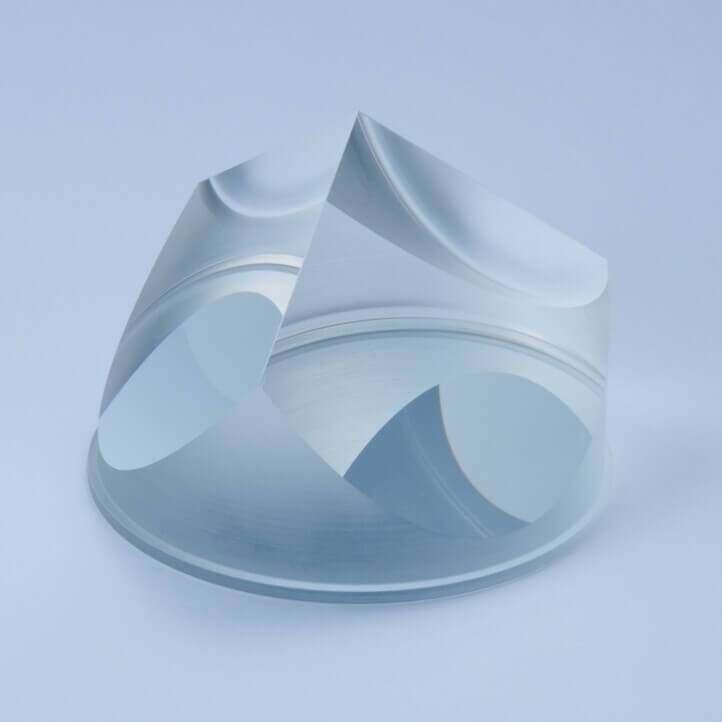
: Retro Reflector : Cube Corner Reflector : CCP
Corner Cube Prisms (CCP) are reflective optical elements composed of three orthogonal surfaces, with the property of always reflecting incident light precisely back in the incident direction. This property is indispensable for distance measurement in total stations and other surveying instruments.
The corner cube prisms installed on the lunar surface by Apollo 11 are still used today for measuring the distance to Earth by laser ranging, representing a symbolic application of optical measurement technology in space. In recent years, they have also been mounted on artificial satellites and space probes.
NITTO OPTICAL, in addition to optical glass, also handles fused silica and low-expansion glass, providing material selection and high-precision processing according to the application. In particular, with ultra-high-precision processing achieving beam deviation accuracy of 0.2 arcseconds or less, we supply highly reliable products for precise measurement fields including space, surveying, and industrial equipment applications.
- Aviation/Aerospace (Aircraft, Ships, Rockets)
- Semiconductors/LCD Lithography Equipment
- Measuring Instruments
- Survey Equipment
- Electro-optical Distance Meters
- Laser Interferometers
Beam Path

Polishing Characteristics Data 1

Polishing Characteristics Data 2

Hollow Retroreflectors

: Hollow Retro Reflector
Hollow Retroreflectors are constructed of multiple high-precision mirrors assembled into a hollow retroreflector, and are applicable to a wide wavelength range.
- Survey Equipment (Ships)
- Measuring Instruments
- Satellite
Beam Path
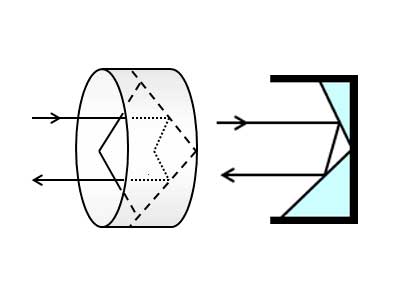
Dichroic Prisms

Dichroic Prisms are prisms that separate or combine incident light by R(Red),G(Green),B(Blue) (wavelength).
- Cameras
- Camcorders
- Spectral Equipment
Beam Path
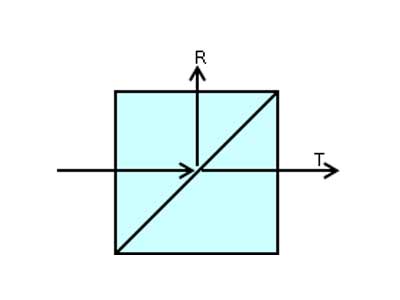
Cross Dichroic Prism (X-cube)

Cross Dichroic Prism (X-cube) is an optical element that precisely separates incident light into R (Red), G (Green), and B (Blue). It is constructed by bonding 4 triangular prisms, and NITTO OPTICAL can achieve bonding angle accuracy of a few arcseconds. NITTO OPTICAL has a capability for producing X-cubes in various sizes from ultra-compact 2mm to over 60mm for large projectors.
- LCD/LCOS Projectors
- Spectral Equipment
- VR devices
- Head-Mounted Display (HMD)
Beam Path
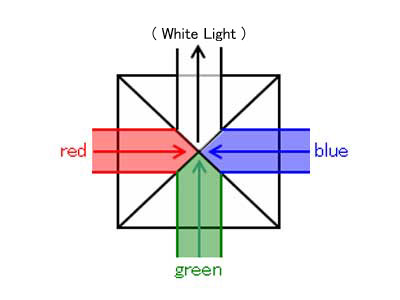
Spectral Characteristics / Specifications1

Spectral Characteristics / Specifications2

Dichroic Prisms – Philips Type
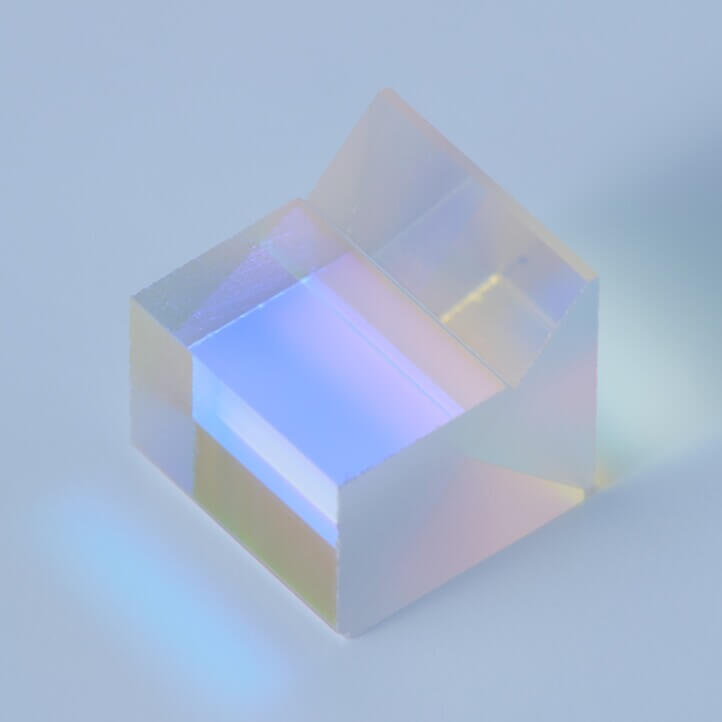
Philips Type Dichroic Prism is a composite prism designed to separate incident light into R (Red), G (Green), and B (Blue) beams, and multi-layer coatings realize wide bandwidth with high transmittance and high reflectance performance.
- DLP Projectors
- Image Information Processing Machines (Color Sensor)
Beam Path
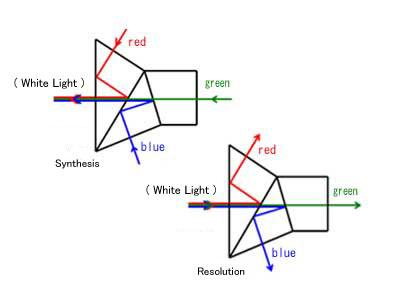
RGB Prism for 3CCD Video Camcorders

RGB prism is used for 3 CCD video camcorders.
- 3CCD Video Camcorders
Beam Path
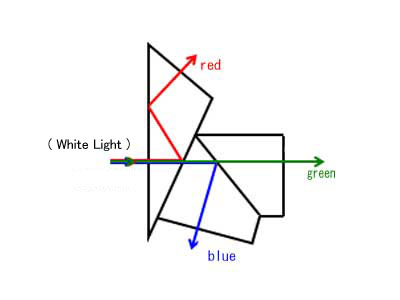
Dichroic Prism – Koster Type
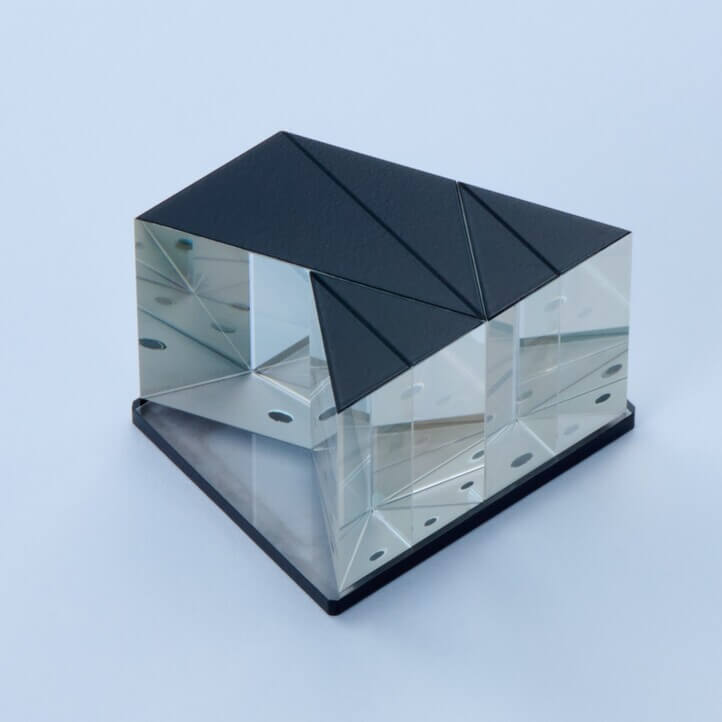
Koster Type Dichroic Prism is an optical element that separates incident light into R (Red), G (Green), and B (Blue) beams and has a structure that combines each optical axis into the same direction.
- Image Information Processing Machines
Beam Path

Arbaa Prisms

Arbaa Prism is a prism that separates incident light into multiple wavelengths and polarization components, and emits them in one direction.
It has high degree of freedom in optical design and can be customized according to applications.
- Measuring Instruments
- Survey Equipment
Beam Path
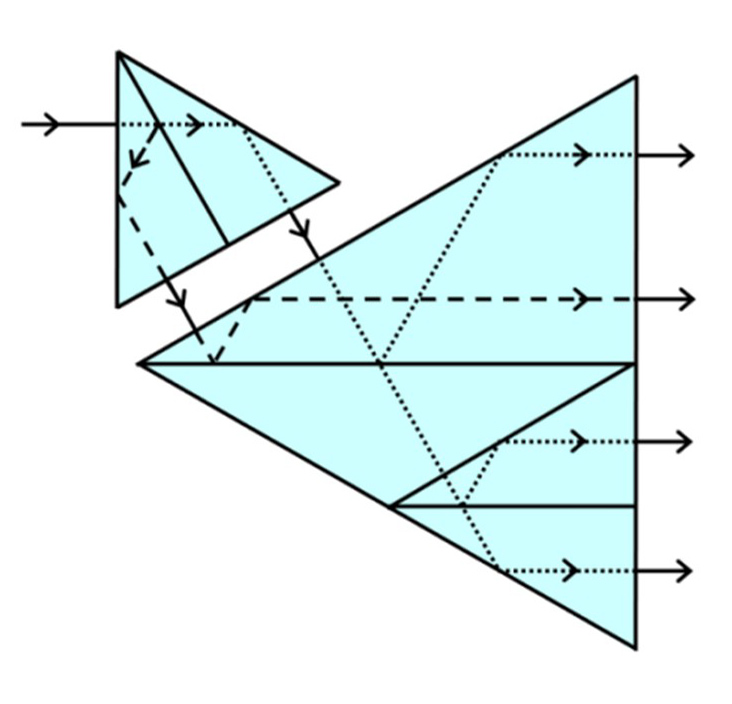
Total Internal Reflection Prisms

: TIR Prisms
Total Internal Reflection Prisms (TIR prisms) are used for DLP projectors. These are combined with two triangle prisms.
- DLP Projectors
Beam Path
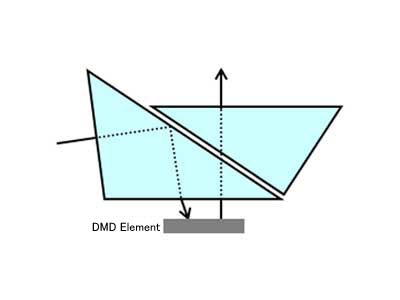
Triangular Prisms
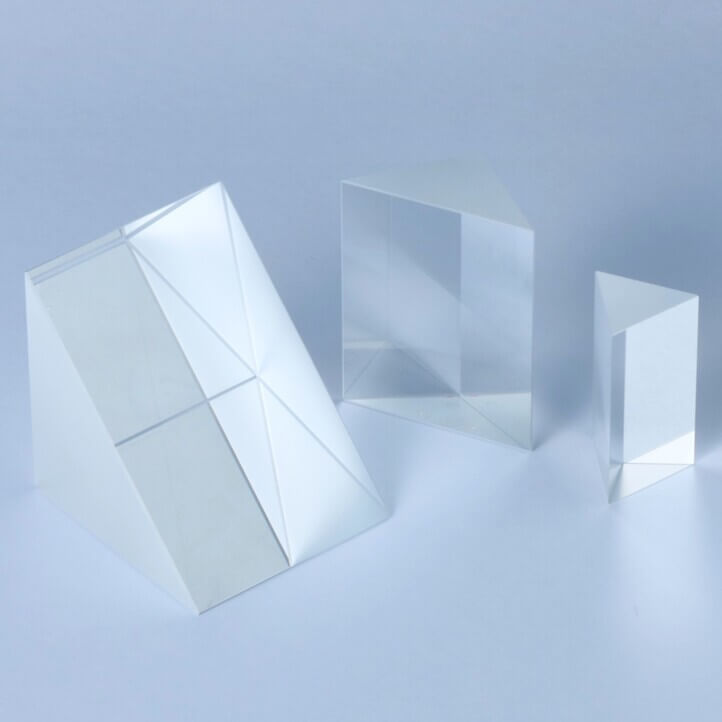
Triangular Prisms are used for wide optical applications. Two triangular prisms are combined together to act as a beam splitter. They are also used for microscopes, survey equipment and measuring instruments.
- Semiconductors/LCD Lithography Equipment
- Microscopes
- Survey Equipment
- Measuring Instruments
- Medical Equipment
Right Angle Prism
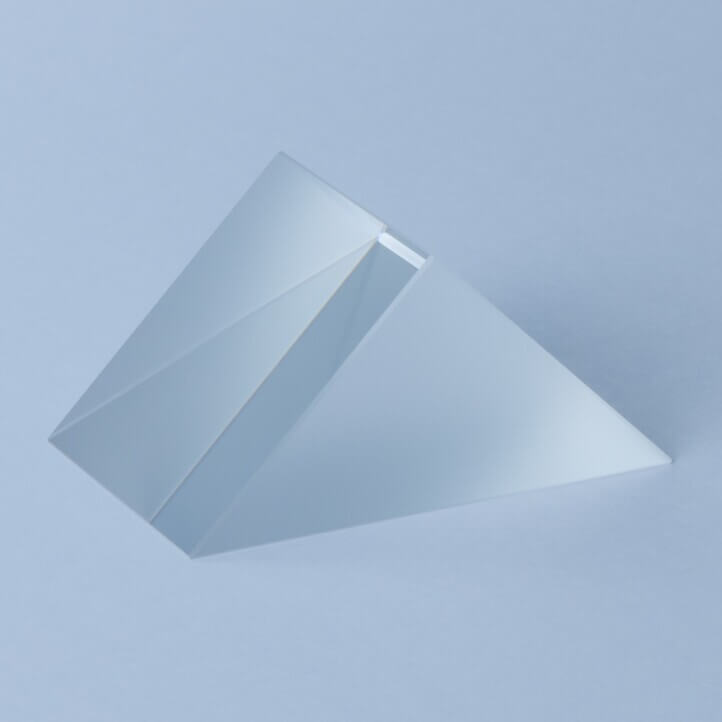
Depending on the usage, the direction of light can be altered 90 or 180 degrees. It also has a function to expand beam according to the angle of incidence.
- Digital Cameras
Beam Path

Equilateral Triangle Prism

: Dispersing Prism
Equilateral Triangle Prism is used in spectral equipment. Incident beam from a certain angle is resolved into each respective wavelength by the refractive index of the prism. Therefore, it is also called Dispersing Prisms.
- Medical Equipment
Beam Path
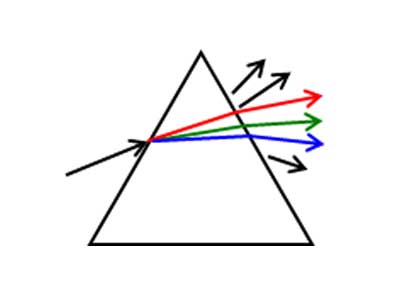
Micro Prisms
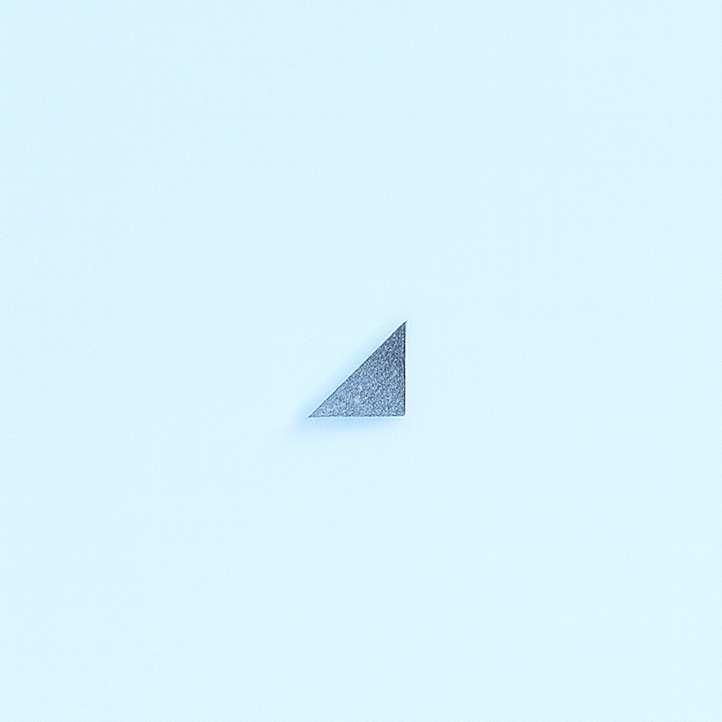
We are specialized in the manufacturing of various micro-prisms in small sizes.
Cross Dichroic Prism (X-cube): minimum size of 2 mm
Polarizing Beam Splitter (PBS): minimum size of 1 mm
Single prisms: minimum size of 0.3 mm
We provide high-quality products that achieve both optical performance and bonding accuracy.
- Medical Equipment
- Endoscopes
- Microscopes
- Head-Mounted Display (HMD)
- Laser Processing Machine
- Fiber Optics
- Micro projectors and sensors
Example1 0.3mm Triangle Prism
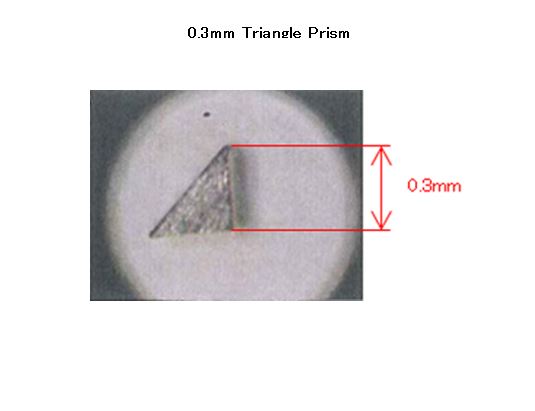
Example2 1.0mm Beam Splitter
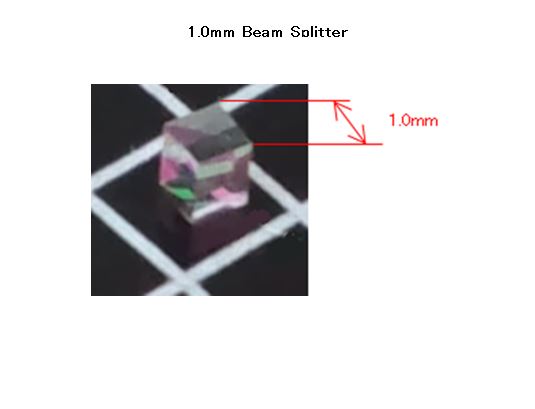
Example3 2.0mm Rhomboid Prism

Example4 2.0mm Cross Dichroic Prism (X-cube)

Penta Prisms
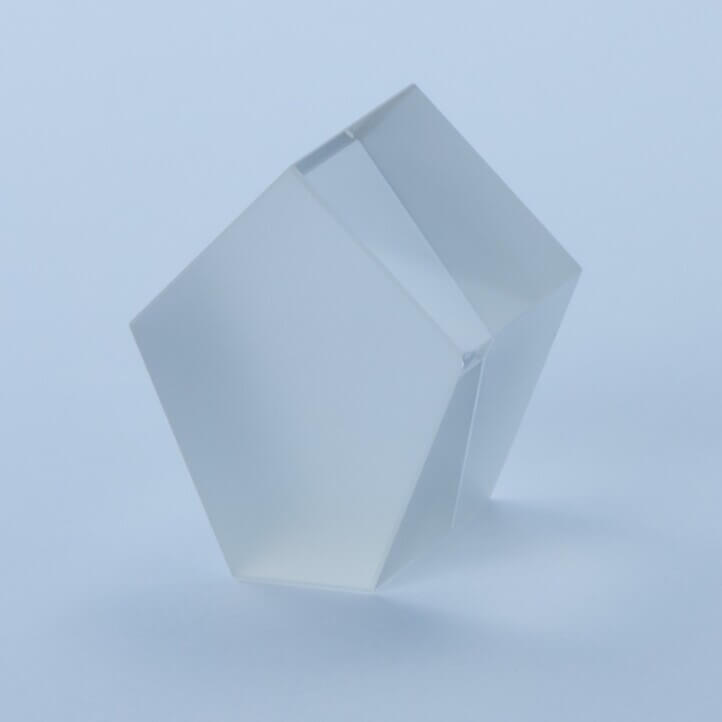
: Pentagonal Prisms
Penta Prisms have the property of beam bending by a constant angle, and are less affected by installation deviation. They are used in optical systems such as surveying instruments that set 90 degrees.
- Survey Equipment
- Measuring Instruments
Beam Path

Porro Prisms
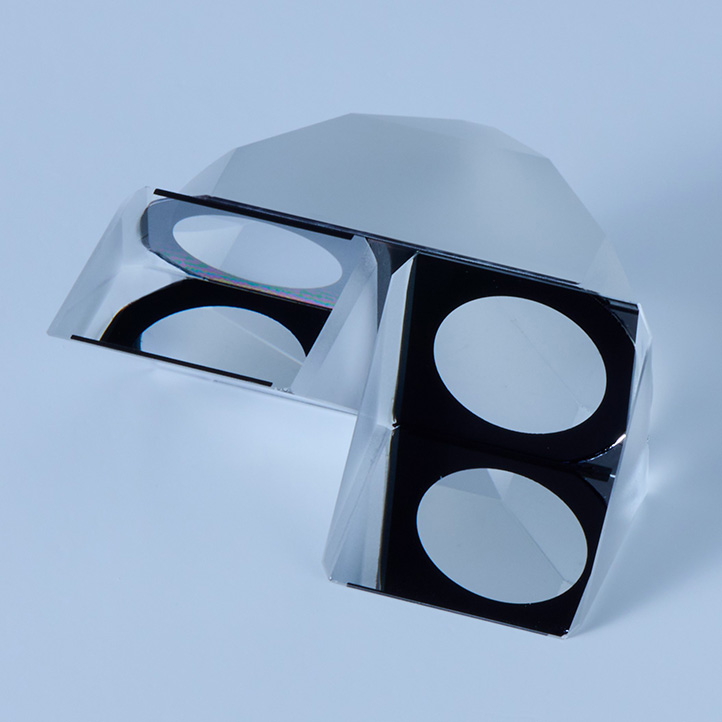
Porro Prisms are optical elements that combine multiple right-angle prisms to invert an image both vertically and horizontally. They are used in Porro-type binoculars and other instruments.
- Medical Equipment
- Digital Cameras
- Binoculars
Beam Path
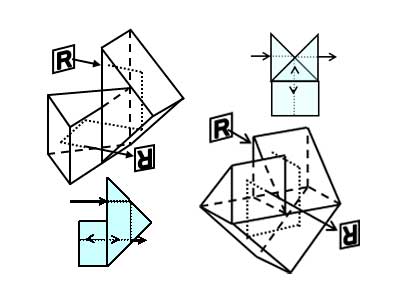
Roof Prisms
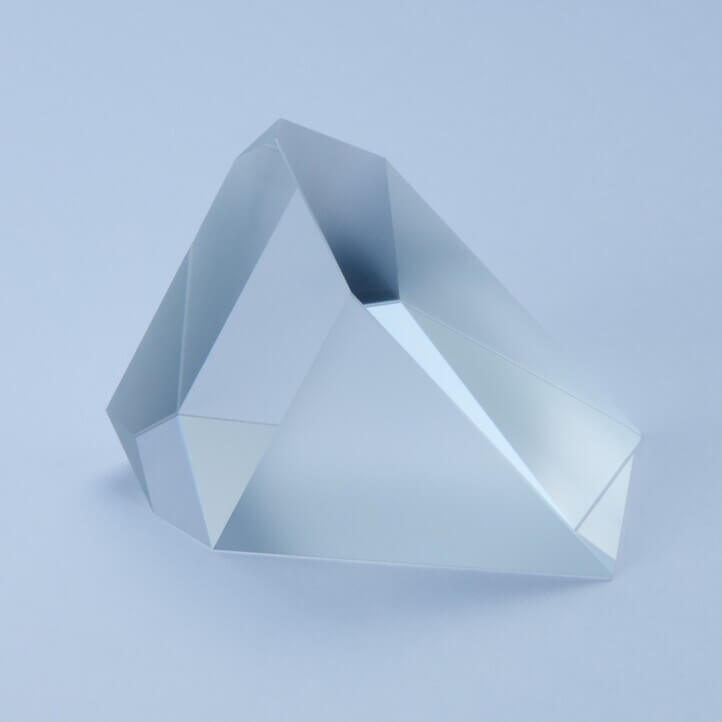
: Dachkantprisma
Roof Prisms are optical elements that convert an inverted image into an erect image, correcting both vertical and horizontal inversion in an integrated structure. They are used in combination with supplementary prisms in binoculars and other instruments.
- Microscopes
- Binoculars
Beam Path
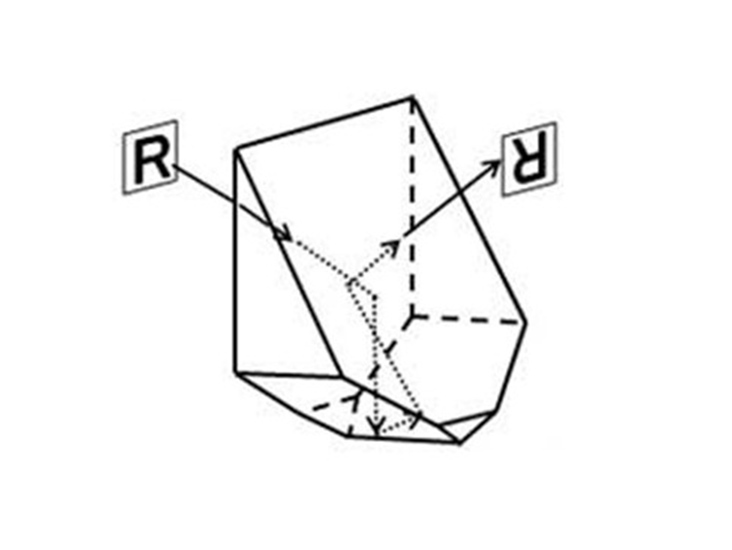
Amici Prism
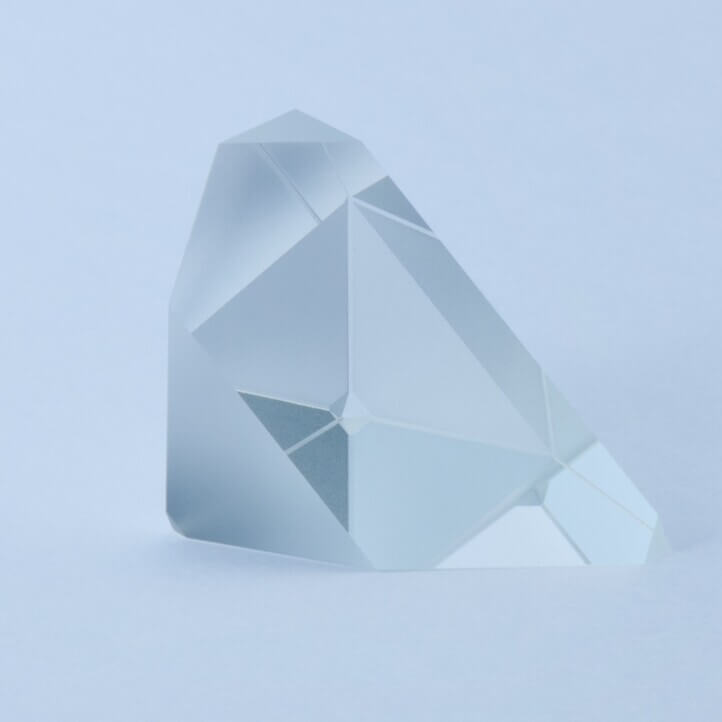
Amici Prism has a roof-shaped structure on the bottom surface of a triangular prism, and generates an erect image by inverting both vertically and horizontally. With the property of bending the optical axis by 90 degrees, it is suitable for optical system designs with a long optical path, and by combining multiple prisms, complex optical systems can be simplified.
- Microscopes
- Survey Equipment
- Measuring Instruments
- Binoculars
Beam Path

Roof Penta Prism

: Penta Dach Prism
Roof Penta Prism is mainly installed in the viewfinders of single-lens reflex cameras and has the ability to invert images both vertically and horizontally. As a result, it is able to photograph the angle of view as seen through the viewfinder. There are special Roof Penta Prism and Right Angle Roof Penta Prism that give a constant deviation of 90 degrees.
- Digital Cameras
- Microscopes
Beam Path

Schmidt Prisms

Schmidt Prisms is a type of roof prism composed of the angle between 45 degrees and 48 degrees between input and output surface. The optical axis is bent 135 degrees, and yet the image can be inverted both vertically and horizontally. The optical axis can be arranged on a line by combining this prism with a supplementary prism, and it is used with direct vision binoculars etc.
- Binoculars
- Survey Equipment
Beam Path

Dove Prisms
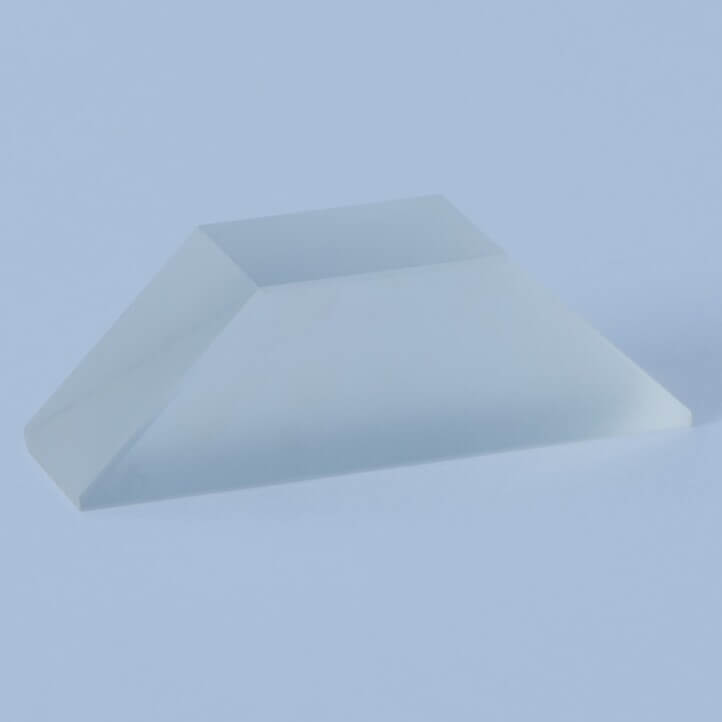
: Image Rotation Prisms
Dove Prisms are prisms with a trapezoidal shape formed by largely truncating the apex of a triangular prism. The optical axis enters parallel to the bottom surface. The image is inverted vertically, but when the prism is rotated 45 degrees, the transmitted image rotates 90 degrees, and when the prism is rotated 90 degrees, the transmitted image rotates 180 degrees. Since image rotation can be arbitrarily controlled, Dove Prisms are used in surveying instruments (total stations) on sloping ground.
- Medical Equipment
- Survey Equipment
- Measuring Instruments
Beam Path
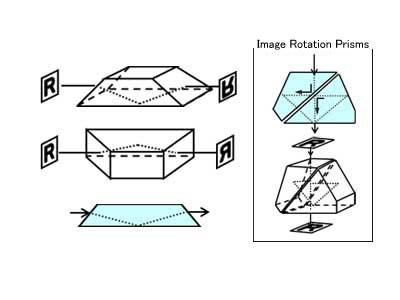
Rhomboid Prisms
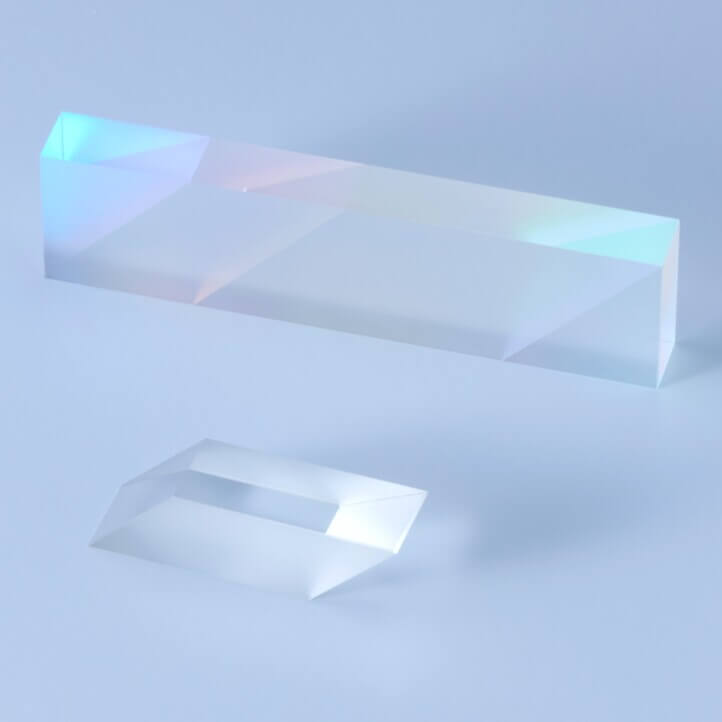
Rhomboid Prisms are used to displace the optical axis by a fixed distance without image rotation, and are utilized as prisms for interpupillary distance adjustment in microscopes.
- Semiconductors/LCD Lithography Equipment
- Binoculars
- Survey Equipment
- Measuring Instruments
- Medical Equipment
Beam Path

Polygon Prisms
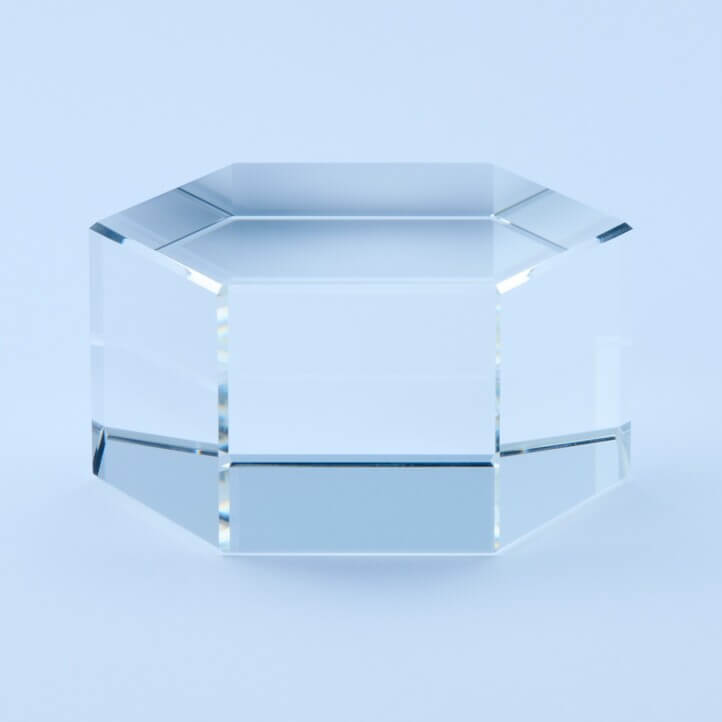
Polygon Prisms are polyhedral prisms, and either odd- or even-sided types are selected depending on the application. By bending light at specific angles, they are used for optical axis control and scanning in devices such as laser printers and imaging equipment.
- Laser Printer
- Projector
Beam Path

Beam Expander Prisms
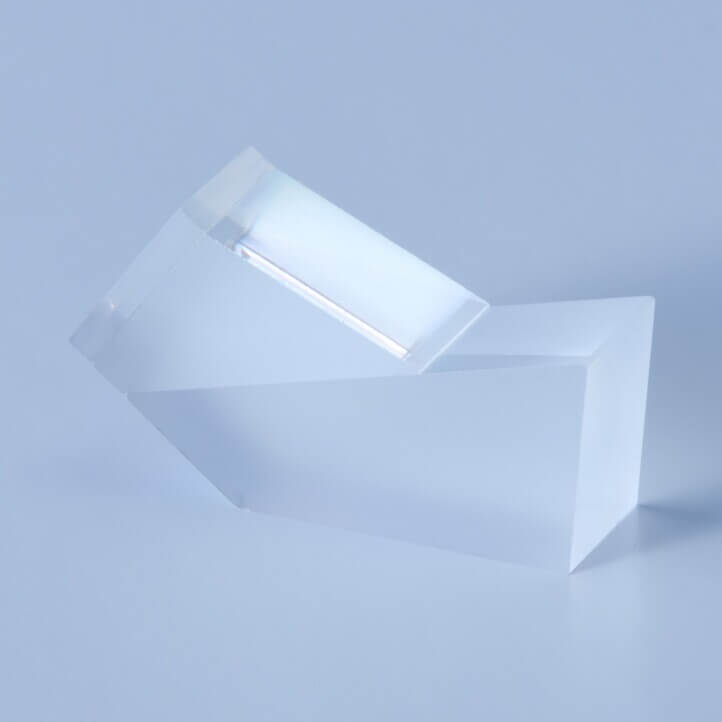
: Littrow Dispersing Prism
Beam Expander Prisms are mainly used as beam shapers for LD (laser diodes). The optical axis can be adjusted in a parallel direction by combining two of these prisms. They have the same role as wedge prisms, but with stronger configuration angles, they allow freely designed beam shapes.
- Semiconductors/LCD Lithography Equipment
- Measuring Instrument
Beam Path
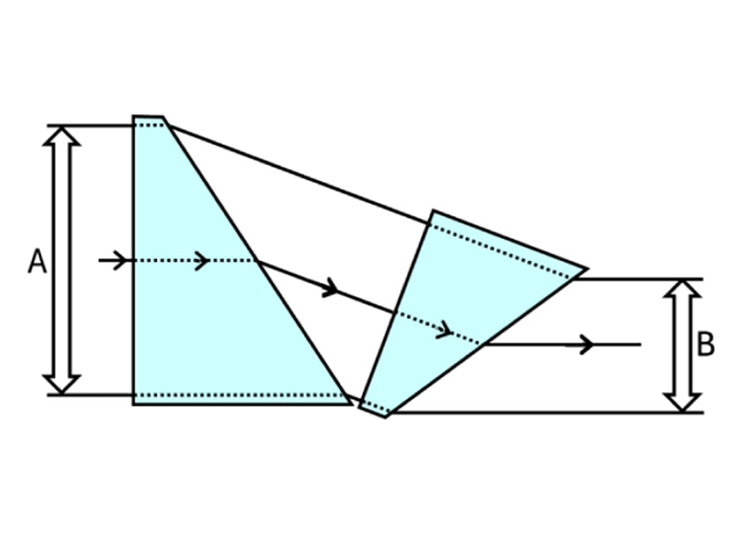
Wedge Prisms

Wedge prism slightly tilts the optical axis to prevent return light, or reshapes a deformed beam to adjust optical efficiency. For example, semiconductor lasers emit an elliptical beam, and after passing through a wedge prism, the aspect ratio is adjusted to focus the beam efficiently.
- Fiber Optics (Isolator)
- Semiconductors/LCD Lithography Equipment
Beam Path
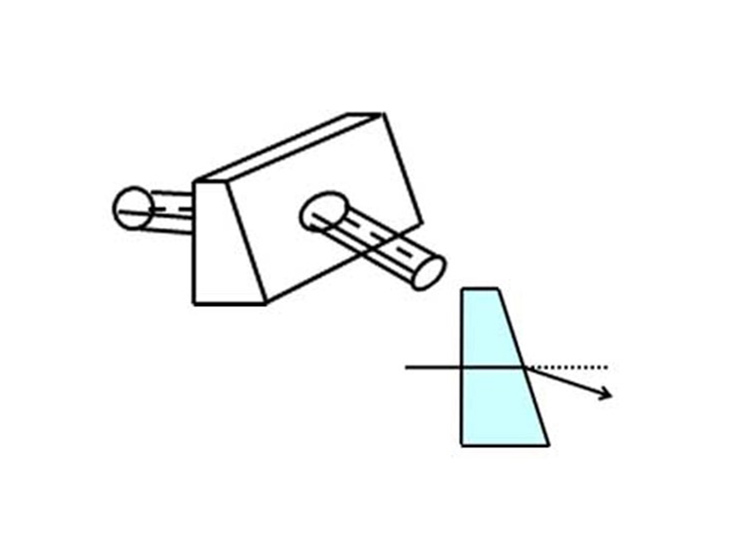

 Contact
Contact Search by Product Category
Search by Product Category Search by Industries and Applications
Search by Industries and Applications
